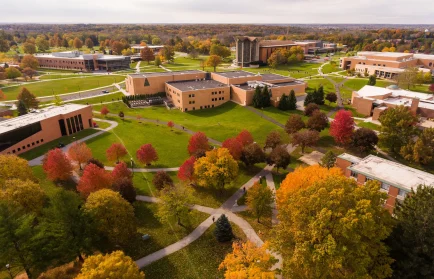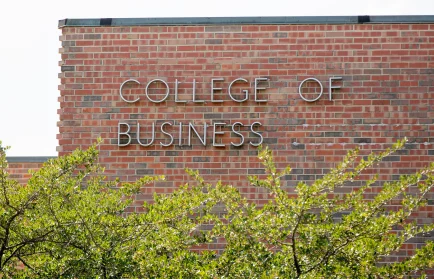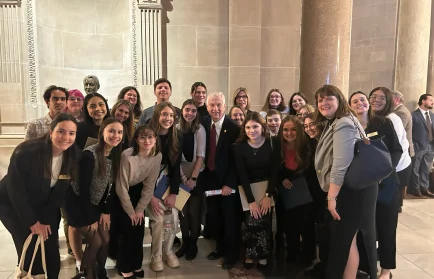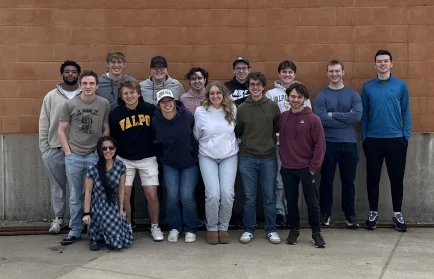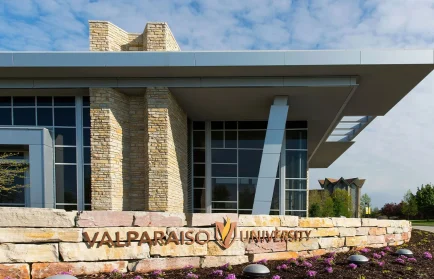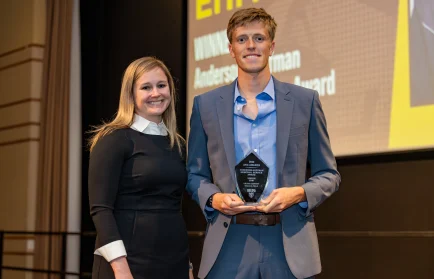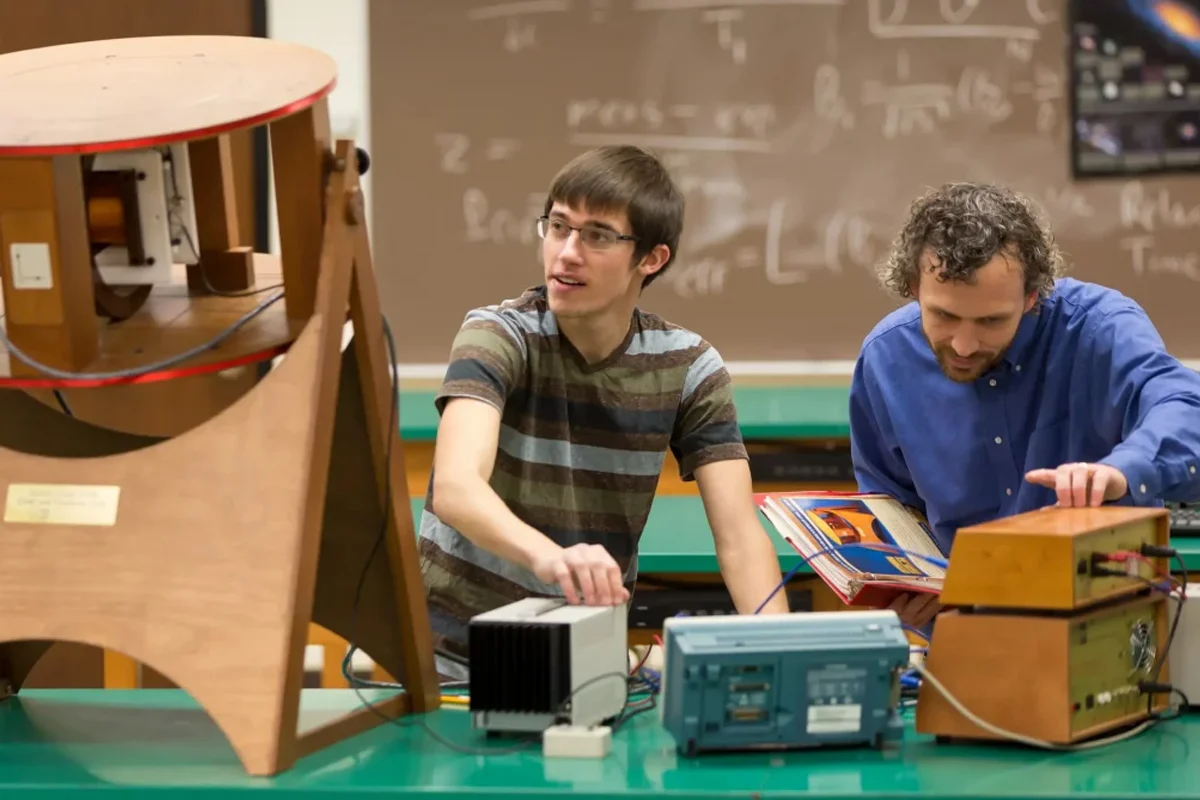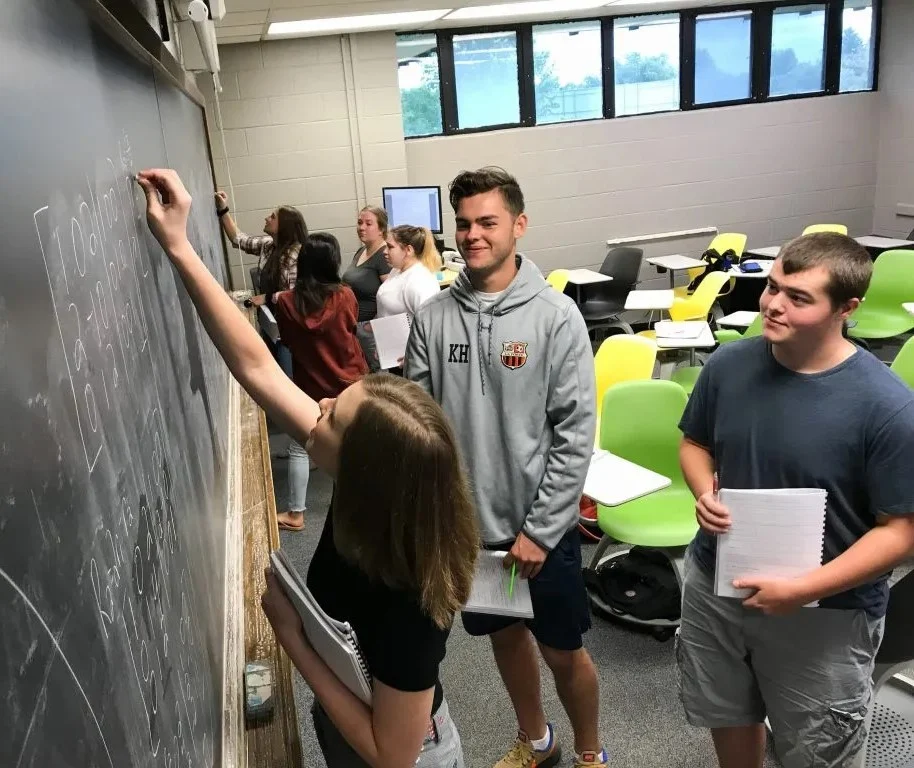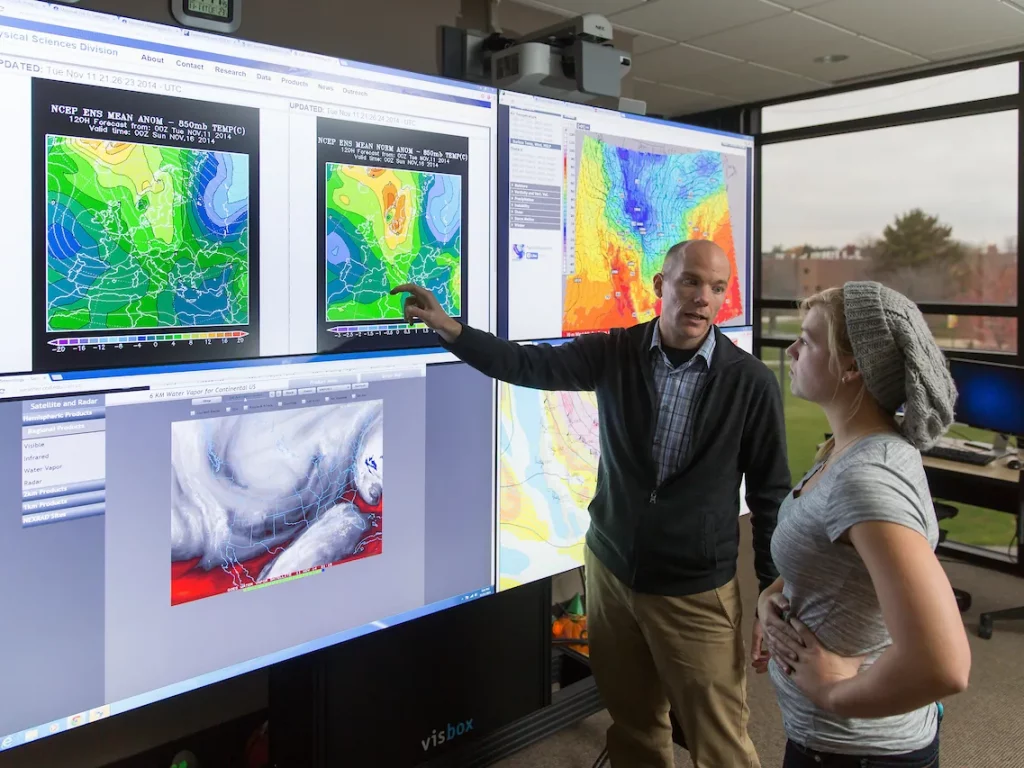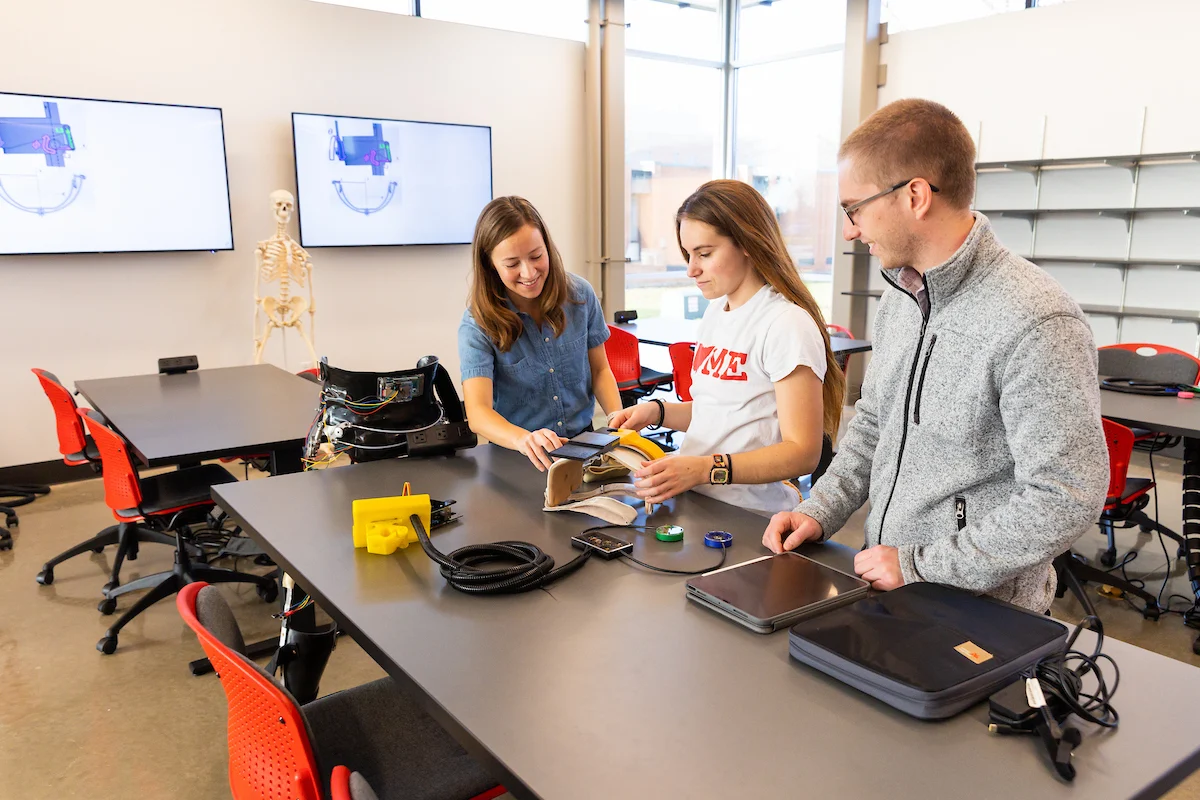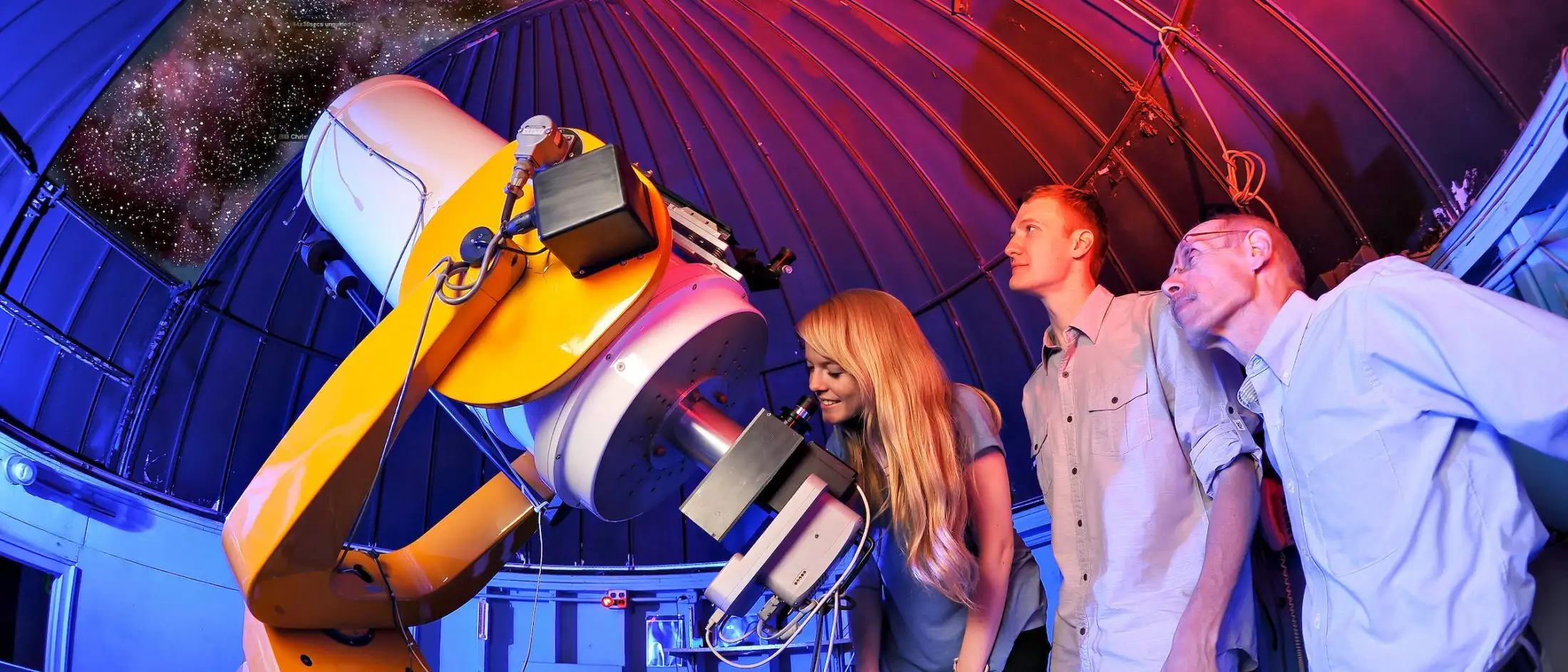Physics
Here, study and research is grounded in the conviction that there is an underlying order, symmetry, and undeniable beauty in nature.
About Our Physics Degree
Here, study and research is grounded in the conviction that there is an underlying order, symmetry, and undeniable beauty in nature – God’s manifestations and our gifted calling to explore them. At Valpo, our students enter the lab on day one.
General Information
Whether our physics graduates decide to jump into their career right after graduation or expand their skill sets in graduate school, their light is in high demand. According to the Bureau of Labor Statistics, the median wage for physicists is $155,680 per year.
There’s a reason why: Employers know physics graduates shine brightly and with versatility. Our alumni can quickly analyze data, model processes, program, and adapt to new information. Each of these skills are highly sought after across a wide range of technical fields.
Careers in Physics:
- Scientist
- Data analyst
- Information technology (IT) specialist
- Physicist
- Physics teacher
- Programmer
- Researcher
The Valparaiso University Experience – colloquially referred to as VUE – is our University-wide general education core. Here, students build up skills in communication, critical thinking, and cultural awareness. With those pillars in place, students are ready to take their passion and understanding of the natural world a step further.
Our comprehensive program is designed to help future physicists radiate on their quest to explore even the most minute inner workings of our reality. Our students gain real experience studying real science while making real discoveries, with topics including nuclear physics, quantum mechanics, condensed matter, and much more.
In this, Valpo uniquely offers a bachelor of arts in physics and a bachelor of science in physics. It is recommended that students who wish to go on to graduate school pursue a bachelor of science in physics rather than a bachelor of arts; a student will choose a bachelor of arts instead only when they wish to add on a non-science minor and do not see themselves continuing their education at the graduate level.
Students can further personalize their academic experience with two concentrations: a fundamental physics concentration or an applied physics concentration. A fundamental physics concentration is recommended for students who plan to go on to graduate studies; an applied physics concentration is advised for students who plan to seek employment right after graduation.
| Physics Core: 34 Credits | ||
|---|---|---|
| CS 157 | Algorithms and Programming | 3 Cr. |
| PHYS 141 | Newtonian Mechanics | 3 Cr. |
| PHYS 141L | Experimental Physics I | 1 Cr. |
| PHYS 142 | Electricity, Magnetism, & Waves | 3 Cr. |
| PHYS 142L | Experimental Physics II | 1 Cr. |
| PHYS 243 | Modern Physics | 3 Cr. |
| PHYS 245 | Advanced Lab 1 | 1 Cr. |
| PHYS 246 | Data Analysis in Physics & Astronomy | 1 Cr. |
| PHYS 250 | Mechanics | 3 Cr. |
| PHYS 314 | Writing in Physics and Astronomy | 2 Cr. |
| PHYS 345 | Advanced Lab 2 | 1 Cr. |
| PHYS 360 | Thermal Physics | 3 Cr. |
| PHYS 371 | Electromagnetic Fields | 3 Cr. |
| PHYS 445 | Senior Research in Physics | 1 Cr. (2 credits) |
| PHYS 499 | Physics Colloquium | 0 Cr. |
| Four credits from PHYS/ASTR at the 200-level or higher: 4 Cr. * | ||
| Additional Recommended Courses: 9 credits | ||
| One year of Chemistry | ||
| PHYS 490 – The Scientific Endeavor Credits: 3 | ||
Note:
*Only one credit from PHYS 492/ASTR 492 can be used toward the elective requirement.
Minors in Physics
The Valparaiso University Department of Physics and Astronomy offers several minors for students seeking to explore the field beyond the introductory level. All require a minimum of 16 credits.
This minor offers a deeper understanding of the basic principles of physics than the introductory course provides.
| Required Courses | ||
|---|---|---|
| PHYS 141 | Newtonian Mechanics | 3 credits |
| PHYS 141L | Experimental Physics I | 1 credit |
| PHYS 142 | Physics: Electricity, Magnetism, and Waves | 3 credits |
| PHYS 142L | Experimental Physics II | 1 credit |
| PHYS 243 | Physics: Atoms and Nuclei | 3 credits |
| At least one course from the following options: ASTR 221, Observational Astronomy, PHYS 245, Experimental Physics III, PHYS 246, Data Reduction and Error Analysis | 1 credit | |
| Electives | 4 credits | |
| Total | 16 credits |
This applied-science minor focuses on the action of forces on bodies and the properties of matter. It is useful for students planning careers in engineering and industry and may include one or more courses in the College of Engineering.
| Required Courses | ||
|---|---|---|
| PHYS 109 | Mechanics — Statics | 3 credits |
| PHYS 252 | Materials Science | 3 credits |
| PHYS 440 | Condensed Matter Physics | 3 credits |
| Seven credits from the following options: ME 252, Materials Science (3 credits), ME 462, Vibrations (3 credits), PHYS 215, Mechanics of Materials (3 credits), PHYS 333, Mechanical Measurements, Laboratory (4 credits) | 7 credits | |
| Total | 16 credits |
This applied-science minor focuses on courses of special interest in the design and development of electronic devices. Some required courses are taught in the College of Engineering.
| Required Courses | ||
|---|---|---|
| PHYS 342 | Electronics | 3 credits |
| PHYS 372 | Electromagnetic Waves and Physical Optics | 3 credits |
| PHYS 440 | Condensed Matter Physics | 3 credits |
| Seven credits from the following options: ECE 221, Digital Logic Design (3 credits), ECE 222, Advanced Logic Design (3 credits), ECE 261, Linear Circuit Theory I (3 credits), ECE 262, Linear Circuit Theory II (3 credits), PHYS 322, Embedded Microcontrollers (3 credits) | 7 credits | |
| Total | 16 credits |
Shining Brightly, Together
Voices of Valpo
College of Arts & Sciences
Program Rankings and Highlights
College of Arts & Sciences
